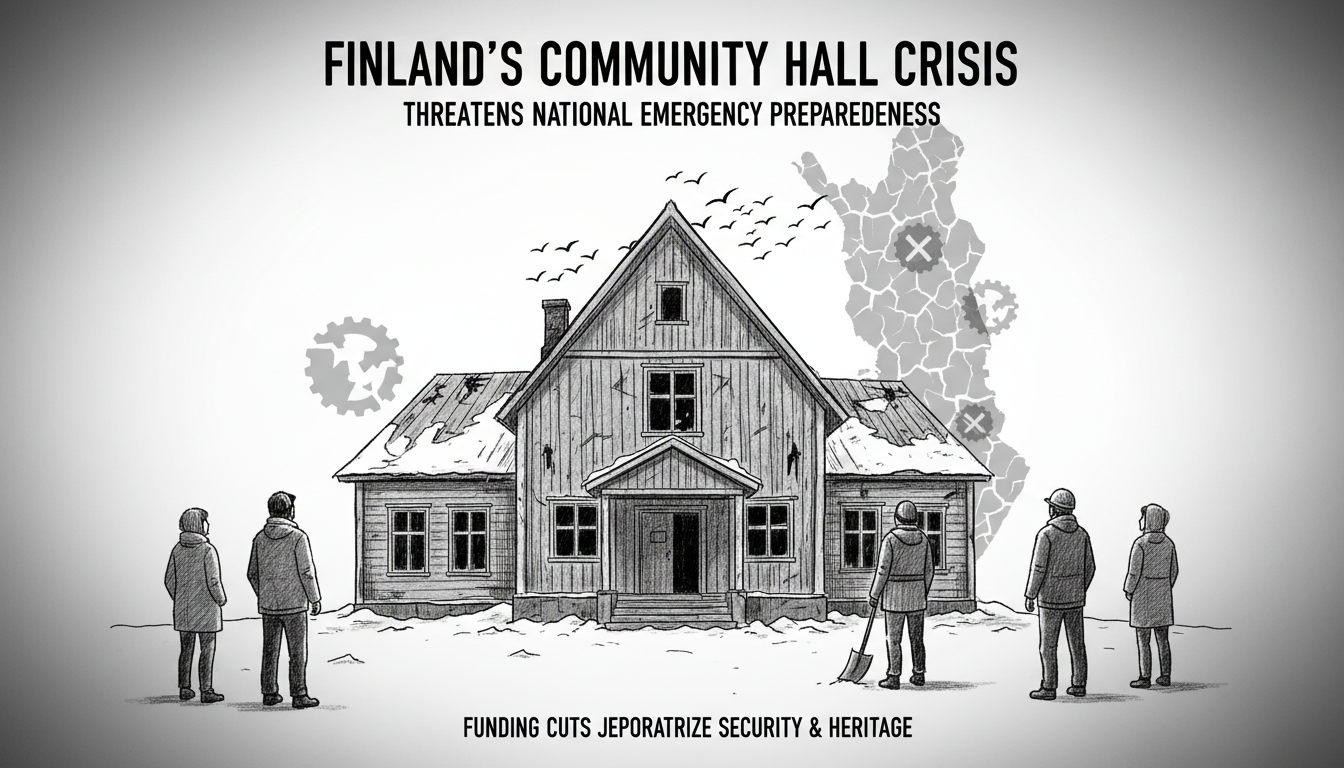Approximately 2,500 Finnish community halls face an uncertain future after government repair subsidies were slashed by two-thirds. Nine major Finnish organizations now demand restoration of funding to previous levels, warning that the cuts directly threaten national crisis preparedness.
These community halls serve as essential gathering spaces during emergencies. They provide venues for clean water distribution and support activities when natural disasters, accidents, or broader crises strike. The network covers all regions of Finland, with many halls representing the only available community spaces in their areas.
Mikko Härö, chairman of the Community Hall Affairs Negotiation Committee, emphasized their critical role in a recent statement. He noted that these facilities often become operational centers during emergencies, coordinating relief efforts when other services falter.
The funding situation has deteriorated dramatically. In 2023, the state budget allocated nearly 1.7 million euros for community hall repairs. Last year saw a 60 percent reduction to just 700,000 euros. This year, available funding dropped further to approximately 500,000 euros despite receiving over 280 applications totaling 8.6 million euros in requested support.
Nine central organizations now advocate for increased subsidies: Finnish Youth Associations, Finlands Svenska Ungdomsförbund, Finnish Local Heritage Federation, Finlands svenska hembygdsförbund, Finnish Villages, Finnish Workers' Halls Association, Friends of Temperance, Finlands svenska Marthaförbund, and ProAgria Centers Association.
The current government's proposed budget maintains these reduced funding levels, continuing the pattern established in recent years. Parliamentary budget discussions are currently underway.
Community halls represent more than just buildings—they embody Finland's tradition of voluntary civic engagement. Most operate through volunteer work by local associations, maintaining structures that often date back to the 1880s. About half of these halls exist in areas with no other suitable spaces for civic activities.
Hannu Ala-Sankola from Finnish Youth Associations described the network as a cost-effective, low-threshold resource during crises. He stressed that local communities maintaining these halls possess crucial knowledge about their areas and residents. This grassroots understanding enables effective support distribution that official authorities might struggle to replicate.
These facilities serve multiple functions beyond emergency response. They host weekly activities for tens of thousands of children, youth, adults, and seniors across Finland. The halls also preserve nationally significant architectural heritage, with many designated as culturally valuable protected sites.
The community hall repair subsidy system has operated since 1978, administered by the Finnish Local Heritage Federation under the Ministry of Education and Culture. In 2024, the system received the European Cultural Heritage Prize, recognizing citizens' role in maintaining unique local cultural heritage.
Recent effectiveness research confirms these subsidies achieve broader societal impacts beyond building preservation. They strengthen local communities, promote cultural activities, and create employment particularly for small construction sector operators.
The funding debate comes at a critical juncture. As publicly maintained spaces like schools and health centers face closures and centralization, community halls become increasingly vital. Churches too are reducing their facilities, especially in sparsely populated regions.
This situation reflects a broader tension in Finnish public policy—balancing budget constraints against maintaining essential community infrastructure. The outcome will determine whether Finland preserves a network that has served communities for generations while providing crucial emergency response capacity.
Local associations now face difficult choices between maintaining historically significant buildings and addressing immediate community needs. Without adequate support, both cultural heritage and crisis preparedness could suffer irreversible damage.

